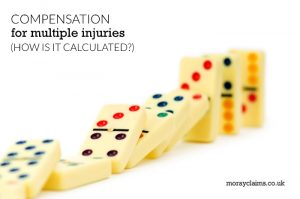One of the most outstanding English football centre forwards of the 20th Century tells of how, in February 1941, he received his call-up papers to the Royal Air Force. After his basic training, he passed on to the course set for a wireless-operator air-gunner. His training took him to numerous places across England. Finally, he was posted to Moray where he was to have an accident which could easily (at best) have ended his footballing career before it had even begun. He takes up the story in his 1949 autobiography, “Football Is My Game”. “It was while I was at Lossiemouth that I met with the accident which nipped my “career” as a W/op.A.G. in the bud, and prevented me from being sent abroad. We were on operational training; the Wellington (bomber aeroplane) caught fire, and down we went in a dive. We finished in a fir plantation. The pilot and bomb-aimer were killed. The navigator lost a leg. I got out alive with various injuries of which the worst was a head wound Continue Reading
Do you have freedom of choice of personal injury solicitor?
Humans have an overpowering need to return favours. This is one pillar of the psychology of persuasion explored in Robert Cialdini’s book, “Influence”. The rule of reciprocity is that we feel a duty to repay others in kind for whatever they have done for us. It’s powerful because it forms the basis of all societies: it allowed our ancestors to share resources securely, knowing that their favour would be returned later. If someone else does us a favour, we feel a psychological burden until we return it. We’re afraid of being labelled as a parasite, if we don’t. Many experiments have demonstrated this phenomenon. In one of these - at Cornell University in the early 1970s - Professor Dennis Regan demonstrated that people are so anxious to get rid of the burden of debt that they will perform much larger favours in return for small ones. In that study, a researcher – “Joe” – bought test subjects a 10 cent Coke as an unprompted favour and then later asked the subjects to buy raffle Continue Reading
What do we mean by Full Compensation for Personal Injury?
My all-time favourite cartoon characters are probably Calvin and Hobbes. Calvin is a young boy of about 6 years of age. To everyone else in the stories, Hobbes is Calvin's stuffed toy tiger. But, to Calvin, Hobbes is his walking, talking best friend – caught by means of a tiger trap baited with a tuna sandwich - who shares all his adventures. Many of these involve stressing out his long-suffering parents. Calvin is precocious in some ways but naive in others. The father of the creator of Calvin and Hobbes, Bill Watterson, was a lawyer. In the cartoon, Calvin's Dad is also a lawyer. I don't have a son called Calvin but we did call one of our cats 'Hobbes'. One comic strip has Calvin sitting, surrounded by what appear to be pots of glue and plaster. He is holding out a baby tooth that has just come out of his mouth. "Mom says the tooth fairy might give me 50 cents for this tooth," he tells Hobbes. "Wow!" replies Hobbes. "So I got an idea," continues Calvin. "I Continue Reading
Compensation for Multiple Injuries (How it’s calculated)
On 24 July 2017, the Boston Globe newspaper reported something which it appears came as a surprise to many people. Some had suspected the truth they exposed in their article, but not many. The subject was pedestrian crossings at busy road intersections. If you needed to cross the road, for example, in downtown Boston, you would press the “walk” button and wait patiently for the lights to change. Your assumption was that you set in motion an electronic process which reduced the time you would have to wait to get your opportunity to cross. As it turned out, however, this was an illusion. The buttons had been disabled. Pedestrians always had to wait a predetermined amount of time within the cycle of the lights. A spokesperson on behalf of the city of Boston explained that downtown was too congested with pedestrians and cars to allow any single person to influence the traffic lights’ cycle. This did not surprise everyone: one resident, who had suspected the buttons were Continue Reading



